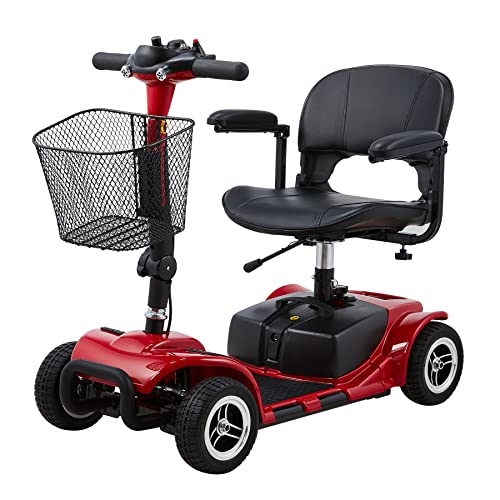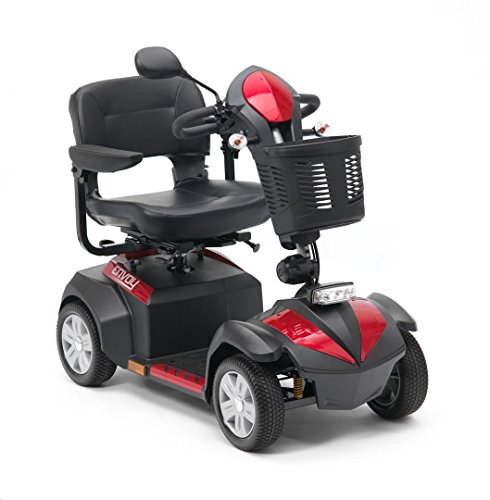자유게시판
| 제목 | The 10 Scariest Things About Mobility Scooters On Pavements Law |
|---|---|
| 작성자 | Carol |
| 조회수 | 25회 |
| 작성일 | 24-10-20 05:11 |
| 링크 |
본문
 Mobility Scooter Laws
Mobility Scooter LawsMobility scooters are a popular mode of transport for those who require a secure and efficient method of navigating their surroundings. It is important that users are aware of and are aware of the local laws and regulations that govern the use of pavement.
Generally, mobility scooters are allowed to be used on sidewalks as well as pedestrian walkways. However, they must respect pedestrians and avoid speeds that could impede traffic.
Class 2 and 3 scooters
If you're thinking about purchasing a mobility scooter 4mph scooter your elderly loved one or yourself There are a myriad of choices available. It is essential to select the appropriate type of mobility scooter, since there are restrictions on the size and radius of turning for public transportation. There are also speed limitations on sidewalks. It is crucial to understand the distinction between Class 3 and Class 2 scooters, as they are made for different environments and require different requirements.
Class 2 scooters are created mostly for use on pavements and indoor areas with the maximum speed of 4mph. They are ideal for shopping trips, pavement mobility scooters with suspension travelling and navigating urban spaces where space is limited. Unlike Class 3 Scooters they don't require registration with the DVLA. They aren't used on roads (except in areas where there is no pavement). Class 2 mobility scooters are a good choice for people who regularly go for short trips or for those who are concerned about their weight.
For those who require a more flexible mobility solution, an adapted Class 3 scooter can be used on the road at speeds of up to 8mph. They must have a way of limiting their speed to 4mph when on the road and should not be driven on bus lanes or on 'cycle only' cycle routes. Dual carriageways should not be used however if they are required for safety or you have an amber flashing lamp then you may use them.
Class 3 scooters cost more than Class 2 models, because they must comply with more stringent requirements for road use. This means that they have to be equipped with effective braking systems, lighting and indicators as well as rear view mirrors. This extra functionality and safety is evident in the cost however it is an investment that could provide greater independence for those not capable of driving a car or walk long distances. You may also have to travel further in order to catch friends or family members in certain circumstances.
Pedestrians
Mobility scooters are a convenient and safe method for those with limited physical abilities or sensory abilities to get around. They can provide a great deal of freedom, but they must be operated in a safe way to ensure the security and safety of other users.
One of the most frequently asked questions regarding mobility scooters on Pavements law scooters is whether or not they can be driven on roads. However the answer is contingent on local laws and ordinances. In general, most municipalities restrict road access for mobility scooters only to sidewalks and streets with low traffic. Additionally, the majority of mobility scooters aren't made to keep up with traffic, so operating them on busy streets could cause an accident that could gravely cause injury to the driver.
On sidewalks, mobility bikes must be operated at a speed that is in line with pedestrian traffic. They must also yield the right of way to pedestrians, and give an audible warning if they intend to pass. It is also essential that scooter operators adhere to all posted signs and regulations pertaining to pedestrian crossings and routes. This will improve safety for both pedestrians and scooter users.
Class 2 scooters are often used for pavement use and should have a speed limit of 4 mph. This means that they are more dangerous to pedestrians than larger scooters. This is why it's important for scooter owners to drive with caution and be aware of other users. In addition, they should ensure that they park their scooter in areas that don't hinder pedestrian traffic or restrict access.
As an overall rule of thumb, you should never operate a mobility scooter 4mph scooter on any trail or path that is designated for bicycles. In addition, many state parks and other outdoor destinations have specific rules for the use of motorized scooters. These restrictions are intended to protect the environment, and to avoid accidents that could harm or hurt pedestrians or scooters. Most cities also have laws that prohibit scooters from being operated on roads with high traffic.
Parking
Mobility scooters give freedom and independence to thousands of people across the UK. There are a few laws that must be followed when using these vehicles. Parking rules, yielding pedestrians and ensuring safety for other users are all required by the rules. The rules ensure that mobility scooters pavement scooters have been properly maintained and do not hinder pedestrian walkways or sidewalks. When you are transitioning from road to pavement it is essential to be extra cautious. This is especially true if there are no dropped kerbs in the vicinity.
Scooters should not be driven on the road unless they're of class 3 and specifically designed for it. They should not be used on bus or cycle lanes, and should not be driven at speeds greater than 4 mph. If you intend to use your mobility device on the road, you should consider installing reflective materials and lighting to increase your visibility.
It is advised to wear a helmet even although it isn't required. This makes you more noticeable to other drivers, especially when the lighting is poor. Avoid using headphones or mobile phones because they can distract you. Wearing reflective clothing, or putting up a safety sign could make you more visible.
It is also essential to maintain a safe speed when you are using your scooter on sidewalks or pedestrian walkways. This will ensure other scooter users safety and avoid accidents.
Mobility scooters do not have to be licensed however, you should be aware of the rules of your area before operating them. In most areas they can be used on sidewalks and designated pedestrian walkways but you should not use them on roads. Always be aware of traffic signals, observe signs and wear a helmet for safety.
Many people aren't aware of the rules governing mobility scooters in their neighborhood or city. There are a variety of resources available that can assist you in determining the right laws for your location.
Speed up
Mobility scooters cannot be operated at speeds higher than the speed of normal pedestrians using sidewalks. They must also give way to pedestrians and signal before taking over or passing them. Furthermore, they should be equipped with vital safety features and be mindful of pedestrians on the sidewalk, particularly those who may have difficulty hearing or seeing. The use of reflective clothing or accessories is recommended to increase visibility in poorly illuminated or dark areas.
Many regions have set speeds for mobility scooter on pavement scooters on sidewalks as well as in other pedestrian zones. These limits are usually set at the same speed as a brisk stroll which is safer for scooter operators and pedestrians. Furthermore, scooters should be equipped with a functional light and reflectors to help them be more noticeable in dim lighting or at nighttime.
Local governments might require scooters to be registered and insured as motor vehicles are. This ensures they are in compliance with local regulations and minimizes the chance of accidents. The majority of mobility scooters weren't designed to be used on roads, and putting them on roads increases the risk that other road users will be injured or damaged.
Although there are no laws which prohibit the use of mobility scoots on roads, it is recommended to only use them when absolutely necessary and not at speeds which could pose a risk to pedestrians or vehicles. Pedestrians should always be prioritised, particularly those with visual or hearing impairments who may not notice your presence until it's too late.
Mobility scooters should be used at an appropriate distance from other vehicles. If they're going to be used on the roads, they should be fitted with a pressure sensor on the tyres or some other device to warn drivers of low pressure. Regular inspections are also necessary to ensure they're in good working order.
 It's not possible to drive on a scooter without the driver's licence, but some people do opt to apply for a permit to practice and get familiar with the vehicle. This is a great way to build confidence and develop the right riding habits prior to getting a full licence. The requirements for a learners permit can differ but usually they include a driving test as well as learning the basic rules of the road and rules.
It's not possible to drive on a scooter without the driver's licence, but some people do opt to apply for a permit to practice and get familiar with the vehicle. This is a great way to build confidence and develop the right riding habits prior to getting a full licence. The requirements for a learners permit can differ but usually they include a driving test as well as learning the basic rules of the road and rules.



